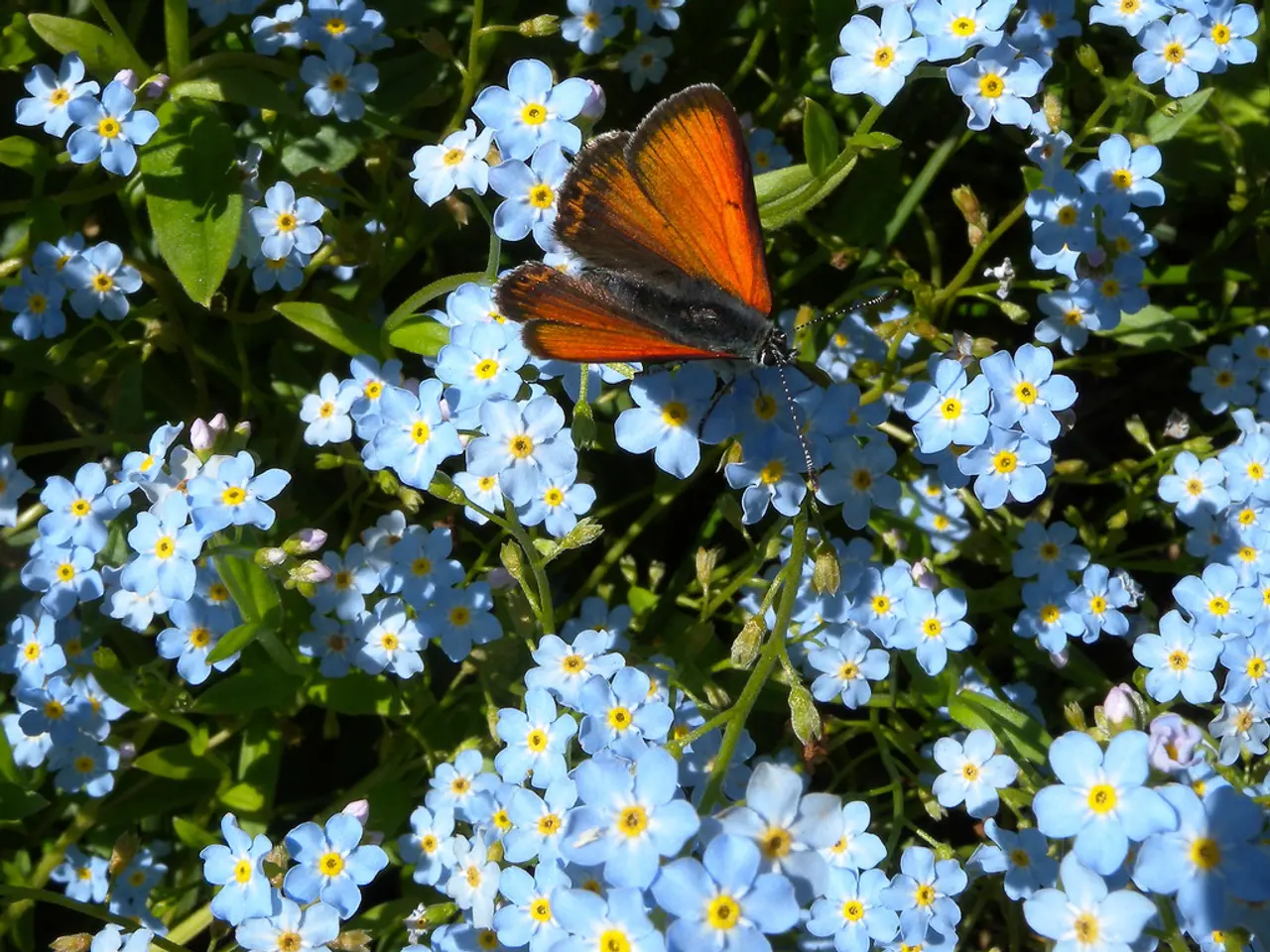Varieties of Kalanchoe: Effortless Kalanchoe Types Suitable for All Plant Enthusiasts
In the realm of succulent plants, the Kalanchoe genus stands out for its diverse and visually striking species. Beyond the commonly seen varieties, there are several unique Kalanchoe varieties that are easy to grow and boast distinctive foliage.
One such variety is the Panda Plant, or Kalanchoe tomentosa. This plant features fuzzy, velvety leaves with a deep green base and cinnamon-brown margins, creating a distinctive soft texture and warm coloration. The leaves grow in a compact rosette pattern, making it visually lush and tactilely appealing.
Another intriguing variety is the Snow White Panda Plant, or Kalanchoe eriophylla. It shares similarities with the Panda Plant, but its leaves have a whitish gray, velvety texture with a cooler, more silvery tone. This variety is considered slightly more cold-hardy and also retains the fuzzy leaf edges with reddish tints.
The Flapjack Plant, or Kalanchoe luciae, is another captivating variety. Known for its thick, paddle-shaped leaves arranged in rosettes that look like "stacks of pancakes," the Flapjack Plant often displays striking colors in tones of red, yellow, and green. It's drought-tolerant and suited for both pots and gardens in warm climates.
The Kalanchoe 'Magic Bell' is a charming addition to this list. Although its main highlight is its unique bell-shaped flowers atop slender upright stems, it also has thick, fleshy rich green leaves characteristic of succulents.
The Velvet Leaf Kalanchoe, or Kalanchoe beharensis, is another eye-catching variety. It has large, arrow-shaped leaves with soft gray hairs and gray-green leaves that mature to a rusty red tint. The Chandelier kalanchoe, similar to the Kalanchoe 'Tarantula', boasts unusual elongated foliage.
The Desert Surprise, or Kalanchoe humilis, is a hardy variety that can withstand brief exposure to 28 degrees Fahrenheit (-2°C.) and full sun brings out the best colors in its foliage. Its leaves have soft notches and irregular splashes of maroon.
A particularly interesting Kalanchoe variety is the mother of thousands, also known as the alligator plant, devil's backbone, and Mexican hat plant. This plant has numerous plantlets along the edges of its leaves that can form new plants. The leaves touch the ground, and the plant roots and produces plantlets, making propagation easy.
Another propagation-friendly variety is Kalanchoe panamensis. It produces roots from its leaves that can be divided away and potted up separately. This variety has small, rounded, gray-green leaves with pink edges and produces tight bell-like flowers in bright pink.
Lastly, the Kalanchoe 'Fire Rainbow' is a variegated hybrid with leaves in hues of ivory, green, and bright pink. It roots and produces plantlets when its leaves touch the ground, making it easy to propagate. This variety needs well-draining soil and deep but infrequent watering.
In conclusion, these unique Kalanchoe varieties offer a wide range of distinctive foliage textures and colors, making them a captivating addition to any succulent collection. They are generally easy to grow, requiring bright light, well-drained soil, and minimal watering, making them suitable for both indoor and outdoor cultivation.
These unique Kalanchoe varieties, such as the Panda Plant (Kalanchoe tomentosa), Snow White Panda Plant (Kalanchoe eriophylla), Flapjack Plant (Kalanchoe luciae), Kalanchoe 'Magic Bell', Velvet Leaf Kalanchoe (Kalanchoe beharensis), and the mother of thousands, are not only visually appealing in home-and-garden settings but also enhance the overall lifestyle appeal of a home-and-garden through gardening. Their distinctive foliage and easy-to-grow nature make them ideal for both indoor and outdoor cultivation.





